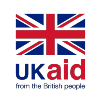Progress towards the UN global goal to ‘eliminate child labour in all its forms by 2025’ will not be made in countries with a significant child labour problem unless attention is focused on where the most dangerous forms exist – small businesses in the informal sector. In the context of this, ten days ago, we launched our campaign: ‘Shift the Focus: Small Business of Child Labour’ to call for a very specific focus on the prevalence of the worst forms of child labour within small businesses, mostly in the informal, unregulated sector.
During the ten days, the campaign called for governments, civil society organisations and international agencies to shift international and national policies and interventions to focus on where the most exploitative and dangerous forms of labour exist. We shared news stories, research, podcasts, opinion pieces and more to highlight and demonstrate the need for the focus on small businesses.
Day 1 – Campaign launch
On day 1 we launched the campaign and asked others to join us to #ShiftTheFocus

Day 2 – a focus on the adult entertainment sector in Nepal
On average over 50,000 workers, including children, are directly involved in the adult entertainment sector (AES) in Nepal. However, this sector is fertile ground for children to be employed, abused, and exploited. Nepal’s laws do not acknowledge the reality of this unregulated informal sector in which small businesses in can thrive.
Day 3 – spotlight on the leather sector in Bangladesh
The informal leather sector in Bangladesh has the worst forms of child labour at every stage of production. Without better understanding of where, why, and how engagement in child labour happens, exploitation and abuse of children in this sector will continue in Bangladesh.
Day 4 – Blog: Child labour is rife in the adult entertainment sector
On day 4 we shared our new blog, uncovering all about the Adult Entertainment Sector in Nepal and how it is rife with the worst forms of child labour.
Day 5 – Keeping in touch
How can you get involved with the campaign? If you want to be the first to know about our action research, life story collection and advocacy then subscribe to our newsletter!
Day 6 – Opinion piece: The dangerous lives of Dhaka’s child leather workers
Covid has prompted leather factories in Bangladesh to fire adult workers and hire children at lower wages in their place. The question is, what should be done about it? On day 6 we shared the Open Democracy opinion piece, which was written by A.K.M. Maksud and profiled findings from the mapping by CLARISSA’s Bangladesh team and amplified the messages of our campaign blog.
Day 7 – Podcast: Starting a dialogue
Beyond the launch of the campaign, CLARISSA will be working to shift the focus through engaging and creating spaces for dialogue. On day 7 we shared our first podcast about the worst forms of child labour found in the leather industry in Bangladesh.
Day 8 – How is #ShiftTheFocus going?
On day 8 we did a roundup, resharing our key messages and encouraging others to get involved in our campaign #ShiftTheFocus.
Day 9 – Research: what’s emerging?
The penultimate day of the ten days of action was dedicated to our research and emerging evidence. We shared publications on the supply chain of the leather industry in Bangladesh and trajectories of minors in Nepal’s adult entertainment industry.
Day 10 – Pandemic Responses
Finally, ahead of World Children’s Day (on 20 November) – which is focusing on the need to listen to children as the world recovers from the pandemic, we ended the social media launch highlighting the impact of the pandemic on children caught in the worst forms of child labour.
In Nepal the closure of the adult entertainment sector just pushed the activities deeper underground and children were more vulnerable than ever to participate in them, but without any protection at all.
In Bangladesh, lockdowns caused the closure of most leather supply chain factories and workplaces for three months in 2020 and overall demand dropped, yet there was still pressure on factories to maintain production. To cut costs, factory managers laid off adult workers and hired children at lower wages to replace them. Many children faced the stark choice of undertake dangerous work or starve.
So, what’s next?
Following the ten days of action, the campaign will continue. We will convene a series of dialogues at country level with CSOs and government actors, leading to a global roundtable event on the World Day Against Child Labour in June 2022. We will also continue to engage and encourage dialogue using the #ShiftTheFocus hashtag on Twitter to ensure that progress is being made to reduce the risk to the millions of children caught in the hidden spaces of the informal sector.
